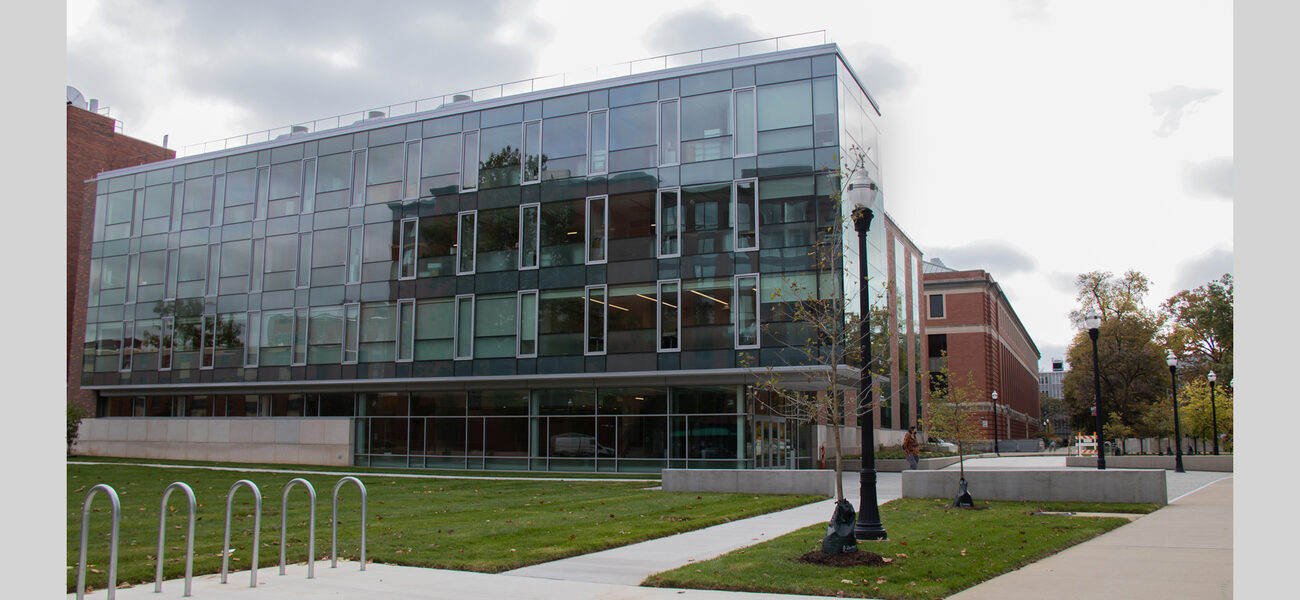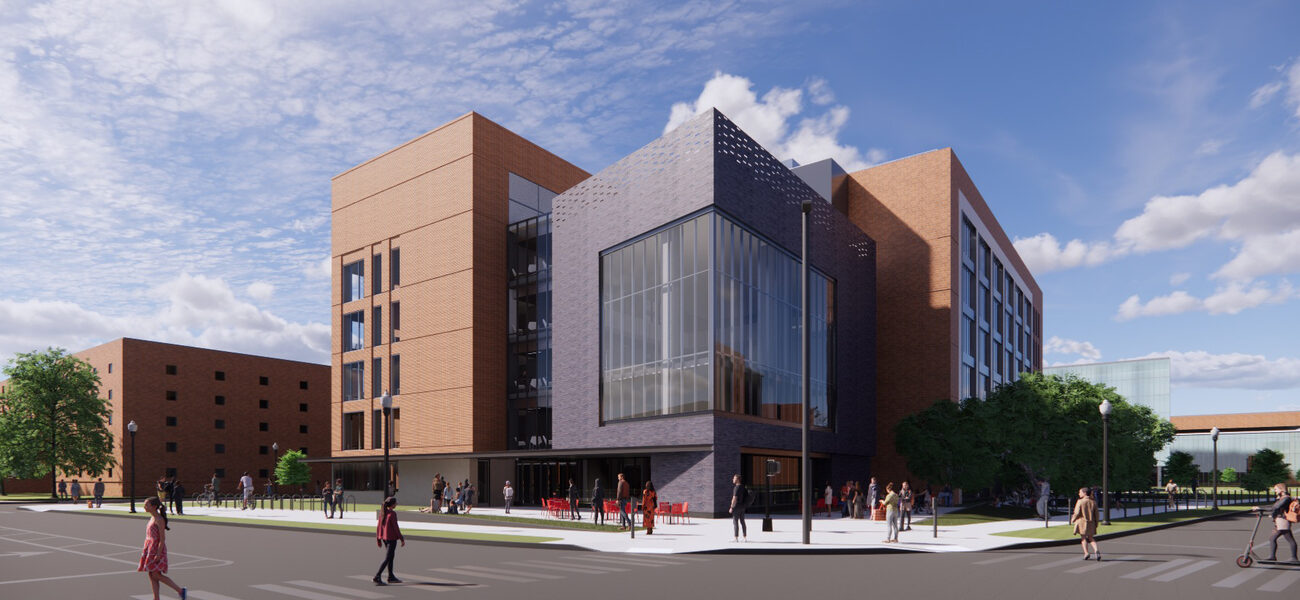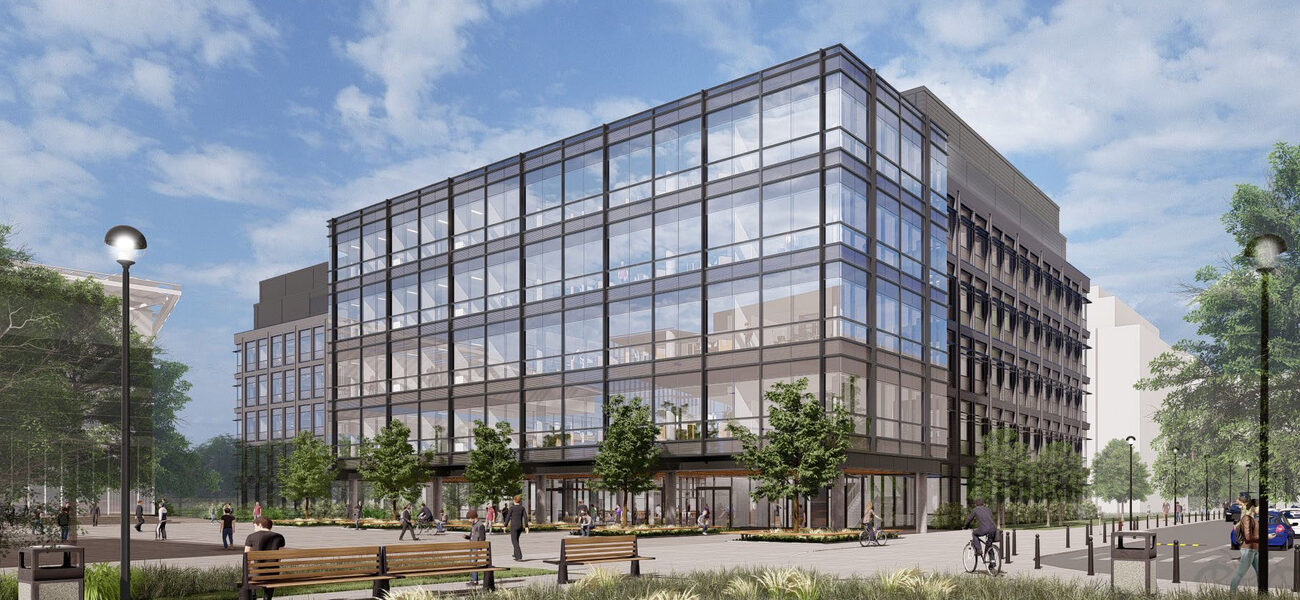The Ohio State University (OSU), in Columbus, is well known for offering strong medical, engineering, and advanced materials programs, which until recently, were always housed within their own distinct facilities. Now, OSU’s new facilities master plan aims to encourage enhanced collaboration between these programs by building facilities with space for shared classrooms, research labs, makerspaces, and faculty offices, and by reallocating existing space to bring departments together. OSU’s new Biomedical and Materials Engineering Complex (BMEC) opened its first phase in April 2022. Phase two, which will include additional labs and classrooms dedicated to material science and biomedical and electrical engineering, is scheduled to open in the fall of 2025. In addition to the BMEC, an area on OSU’s west campus is being developed as an “innovation district” that includes new facilities dedicated to interdisciplinary research and energy advancement.
“Our engineering and medical faculty and students have always done a lot of collaborating on projects, especially related to biomechanics, biomaterials, devices, and advanced materials but they have never had a building like the BMEC that truly facilitates that teamwork,” says Michael Hagenberger, associate dean for facilities and capital planning at OSU’s College of Engineering. More than 60 faculty across OSU’s College of Engineering currently have joint appointments or research partnerships with faculty in OSU’s medical school, and in 2022, over 90 percent of OSU’s $1.38 billion in research expenditures were related to engineering and medicine.
The BMEC is adjacent to OSU’s Chemical and Biomolecular Engineering and Chemistry (CBEC) building, which opened in 2015. Since the BMEC and CBEC include multiple buildings that border each other on the main campus, they form what Hagenberger refers to as the Advanced Materials Corridor. He envisions that the corridor will continue to grow to include additional facilities related to engineering, materials, or medicine.
“When the CBEC was built, one of the main goals was to bring together the chemical and biomolecular engineering and chemistry departments to encourage more interaction,” says Hagenberger. “While we did manage to bring these departments together under one roof, in hindsight, the building design did not encourage as much collaboration as we had hoped for since it does not include enough shared space.” He added that this lesson helped the project team for the BMEC to intentionally focus on designing shared space that will encourage an ebb and flow between the various departments housed within the facility, rather than departments becoming siloed in their own individual spaces.
Phase One – Mars G. Fontana Laboratories
The $59.2 million Mars G. Fontana Laboratories is the first phase of the BMEC and is the new 124,000-sf home for OSU’s biomedical engineering, materials science, and engineering departments. The new facility enabled the biomedical engineering department to move from west campus, bringing it closer to the materials science and engineering departments that were already located on the central campus.
The original project site consisted of four buildings that, according to Hagenberger, were difficult to move between due to elevation issues between the structures. The BMEC project corrected these elevation issues and included a complete renovation of two existing labs and construction of a 20,000-sf addition.
Phase Two – Gateway to Engineering
“Phase two of the BMEC will not have an official sign that reads ‘gateway to engineering,’ but that’s what we called it because that’s the purpose it will serve,” says Hagenberger. “Every first-year OSU engineering student will begin their career in this space.”
The building also features an architectural element that Hagenberger calls the “beacon,” which similarly is not an official name but the perfect description for the four-story, eye-catching glass addition which will house a makerspace on the first floor showcasing science on display for students and visitors as they pass by the facility. One example of a recent OSU project that would pique the interest of onlookers is a one in which the electrical engineering department is monitoring biomechanics by putting sensors on people playing video games or running on a treadmill.
The makerspace is also designed for students to do small-scale prototyping; putting this on display is intended to draw students to the building and to envision pursuing STEM professions. In addition to the makerspace, each floor of the BMEC will have a mixture of activities, including wet labs, dry labs, and classrooms all shared by the biomedical engineering, materials science and engineering, electrical engineering, and engineering education departments. When both phases of the BMEC are complete, 100 percent of OSU undergraduate engineering students will participate in either teaching or research activities within the new complex.
West Campus Innovation District
Taking place simultaneously with the BMEC phased project is the creation of a new district on OSU’s west campus known as Carmenton, a nod to the school’s alma mater “Carmen Ohio,” famously sung by the football players at the end of every game. OSU received $100 million from Jobs Ohio, the state’s private economic development arm, to develop the district, which is aimed at pairing students and researchers with industry partners to encourage innovation and entrepreneurship and to enhance production capabilities of student ideas. When complete, Carmenton will be a 270-acre mixed-use complex comprised of academic, medical, corporate, and residential use buildings. The first facilities planned include:
- OSU’s Interdisciplinary Research Facility, scheduled to open in August 2023, will collocate researchers from a variety of disciplines including life sciences, engineering, agriculture, and artificial intelligence. The five-story building will have two floors dedicated to curing cancer, including a specialized lab that focuses on immune-oncology where researchers will study how the body’s immune system can be used to fight cancer. The other three floors will be dedicated to research related to heart, lung, and nutritional health, infectious diseases and therapeutics, and community health-related research such as water and environmental safety. Within the facility, there will be building-wide shared research support spaces, including a vivarium with 12,000 animal cages, 14 wet labs, and four computational labs.
- OSU’s Energy Advancement and Innovation Center will be Carmenton’s second facility, scheduled to open in the fall of 2023. This new facility is designed to bring OSU students and researchers together with industry experts to collaborate on solutions related to renewable energy, artificial intelligence, and smart systems.
In addition, the new eight-story OSU Wexner Medical Center Outpatient Care Center is also expected to be completed in Carmenton during 2023 and will focus primarily on cancer care including clinical trials.
By Amy Cammell


